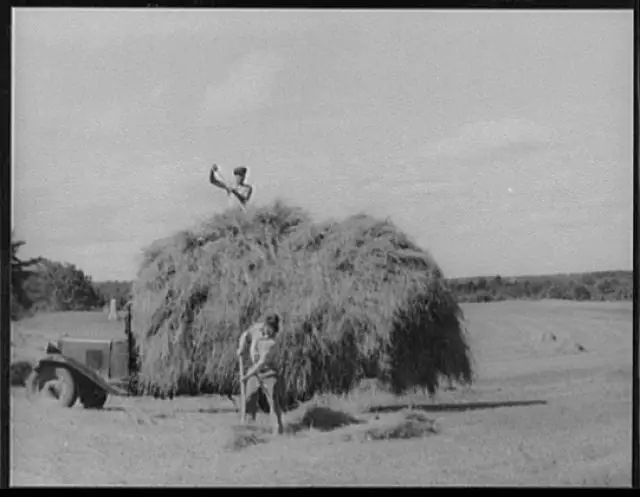The twine on an oat straw bale came undone, so I ended up forking it all and carting it home loose. The kids couldn’t lift the loaded pitchforks high enough, but they helped by climbing on top of the stack and packing it down so we could get all the straw collected in one trip. Some people pay money to go on a hayride, here it is compulsory.
Whenever I pick up a fork to move hay or straw, I am glad to live in the era of half ton round bales. Of course, the removal of the sweat in haymaking may have been the critical step in undermining the American small family farm. The labor required for mowing and stacking hay was probably the single most limiting factor in determining the number of livestock on a farm in the old days. Increases in mechanical haymaking opened the door to industrial scale farms, at least in parts of the world where hay was required for winter feed. There was a time not too long ago when a multi-generational family supported itself from this 100 acre farm, as did many other families on farms of the same size in this neighborhood. Not so anymore. Self-sufficient farms are now all on the order of 500-1,000 acres, anything smaller than that is just a hobby.

